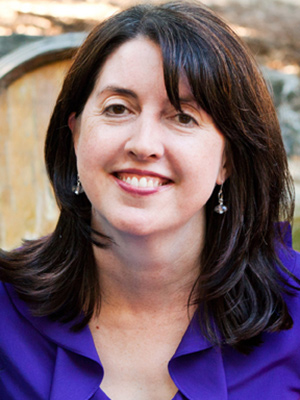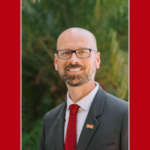
Sharon Van Epps
Sharon Van Epps attended the SDSU Writers Conference so many times that “the years blur together.” Her first time was in the 1990s, and most recently in 2009, 2010, 2011, 2012, 2014, and 2016. Along the way, she picked up a few Conference Choice awards — handed out by the agents and editors who meet one-on-one with attendees pitching their work. If perseverance awards were given, she would have picked up a few of those too.
In 2009, she began working on a memoir about her attempt to adopt a toddler from India, “a process that went wrong in a hundred gut-wrenching and complicated ways,” said Van Epps.
“I pitched the book at SDSU SO many times that I’m worried some of the longtime conference faculty will read this interview and say, Oh, this is THAT lady who talked to me that one time, and give an eye roll, because I was out there pitching way too early. Along the way I got feedback that left me hopeful, but things never quite clicked.”
Last summer, things clicked. Van Epps signed with agent Bonnie Solow and is currently preparing Almost My Daughter for pitching to publishers.
She answered some questions about her SDSU conference experiences, and her journey to getting an agent — which includes the game-changer of landing an essay in The New York Times.
Where were you in your writing career the first time you attended the SDSU Writers’ Conference?
I was a single 20-something living in New Hampshire. I ran my own copywriting/editing business at the time, and a local yoga instructor asked me to help him write a book in exchange for free yoga classes. I used that opportunity to learn how to write a book proposal, and I went to SDSU to pitch the book to agents and editors. I didn’t really have the confidence to pitch my own work at that point, but I felt comfortable promoting the yoga master. I pitched before my work was ready, honestly — but what a gift to learn firsthand that agents and editors are just people. I made some great connections at SDSU. I met an editor from Doubleday who referred me to agents and invited me to the Doubleday office in New York to talk about the project. I never managed to sell that book, but I learned so much about publishing through that effort, and it wouldn’t have happened without SDSU.
How did you find out about the SDSU Writers’ Conference?
I grew up in Phoenix, but moved to New Hampshire for grad school and loved it there. My grandmother in Arizona was unhappy about me settling into small town New England life. She came to visit and asked, “How many single men do you think there are in this tiny state?” I don’t know how she found out about the conference, but she paid my registration fee as a gift, hoping I’d meet a West Coast guy there, and return closer to home. Grandmother had no idea that most of the people at writers’ conferences are women, but she kept paying my registration fees every year until I got married in 1999. She died the following year, happy that, because of my new husband, I’d moved to Virginia, which she viewed as an improvement.
Please share any highlights from any of the years you attended.
So many agents and editors I’ve met at SDSU have given me encouragement along the way. I won Conference Choice awards a few times, and as Erin Quinn [conference director] says, that’s always a nice “atta boy” moment. More recently, at the 2016 conference, Sarah Smith of the David Black Agency read some of my memoir at an Advance Reading appointment. At the end of the meeting, she asked to see my memoir proposal. Ultimately we didn’t end up working together, but her encouraging response convinced me that I was ready to cast my query net a little wider, and as a result, I found and signed with my agent, Bonnie Solow.
The other aspect of the SDSU Conference that stands out is all the wonderful friends I’ve made. The only thing I clearly remember about my very first conference was meeting Mary Leo. It’s been wonderful to watch her career as a romance novelist evolve. Laurenne Sala and I bonded at the memoir table during the networking lunch five years ago, and now she’s writing children’s books for Harper Collins. Laurenne introduced me to her friend Simone Pond the next year at SDSU, and now Simone is crushing it as an indie author of YA sci fi. I love that we keep in touch.
What keeps you coming back?
The SDSU Conference has always been so professionally run yet so friendly. It’s a great place to learn and network. At this point, I’ve been writing such a long time that I’ve got people coming to me for advice, but I still like to cultivate the “beginner’s mind” as they say in Zen. There’s always something more to learn, or a fresh twist to expand your thinking on a topic. Also, SDSU pitch sessions are great. This conference attracts top industry professionals, and I love that the consultation are 10 minutes long. I don’t write high concept stuff; I can’t pitch my literary memoir in a two-minute speed-dating situation.
Did you begin your freelance career specifically to build platform for your memoir?
After I got my MFA at the University of New Hampshire, I wrote a few features for a local magazine and taught college writing as an adjunct, but eventually I focused on editing and copywriting to earn more money. After I got married, life events derailed my career. My grandmother became ill and died, and I had to handle her estate, and arrange and supervise care for my disabled uncle who lived with her. At the same time, my husband and I were trying to adopt a toddler from India, a process that went wrong in a hundred gut-wrenching and complicated ways. Ultimately I spent 18 months living in Hyderabad, India, spending time with a little girl named Haseena at the orphanage every day, only to lose her when Indian activists shut down adoption in the state of Andhra Pradesh. That experience, of living in a foreign country apart from my husband, fighting for this child, then losing her and trying to find a way to survive all that grief and carry on, is what my memoir Almost My Daughter is all about.
I’ve been working on this book since about 2009, and it’s still not completely done … Then, in 2014, my manuscript was really starting to shape up, I placed a couple of pieces at HuffPost Parents, and I thought my time had come. Agents read the material and mostly said, “Love your writing, this book will never sell” so I decided to regroup.
I’ve spent the past two years establishing myself as a freelancer. I put my head down and cranked out tons of submissions to connect with potential readers of my book. I published work in more than 20 online magazines, placing essays related to my memoir at The Washington Post and at The Kitchn. My memoir still wasn’t completely written, but I’d worked my ass off, and I knew I was as ready as I’d ever be to query agents.
[Editor’s note: Van Epps chronicled her long and winding journey toward representation in this blog post.]
What did it feel like to finally get an agent?
I wish I could tell you that I threw a big party to celebrate, or that I was so overcome with joy that ran down the hill from my house and jumped in Lake Washington with all my clothes on. My husband and I did open some cheap champagne from Costco, but the truth is, I felt really calm, a sense of things clicking into place. I actually received two offers of representation, but I went with Bonnie Solow because her vision for the memoir matched mine perfectly. I needed to find someone who agreed that my story was bigger than just “an adoption book.” My story revolves around questions as old as the judgment of Solomon: What makes a real mother? How does a mother go on when she loses her child? And how do any of us transcend the burdens of the past? Bonnie got that. In fact, I almost cried during our phone call because I couldn’t believe that I’d found someone who believed in my work with such passion.
Care to share the opening line of your memoir?
Oh, this is embarrassing, but okay:
I didn’t know, on that February morning when I walked out the door of my house on Jay Miller Drive in Falls Church, Virginia — the house John and I bought two months after our wedding, and loved for its maze of azalea bushes out back and its kitschy mid-century pink toilet in the master bath, the house with cozy sun room off the kitchen and the fireplace in the dining room, the house we chose as the home for our someday children — I didn’t know, when I walked out the door that morning, that I’d never see that house again.
Tell me about that first big essay you sold — to Motherlode at The New York Times.
That essay was called “Lackeys of Youth Soccer, That Arrogant Sport” lamenting the high cost of club soccer and the ways that lower income families are cut out of the system. Some readers loved it, quite a few hated it, but that piece, which came out in 2014, captured a lot of attention and changed everything for me. Having something published in The New York Times opens doors, regardless of the topic.
What’s the first book that spoke to you as a young reader?
I don’t know if it was the first, but I always loved A Little Princess.
Who’s your favorite author (or top three if it’s hard to choose one)?
That’s a hard question! I admire Dani Shapiro so much, not only for her brilliant work, but also for everything she gives to the writing community through her excellent blog, Moments of Being, the many workshops she teaches, and through Sirenland, the conference she co-founded with Hannah Tinti, another talented and generous writer. I look up to Pam Houston for similar reasons. As a young writer I was obsessed with Pam’s short story collection, COWBOYS ARE MY WEAKNESS, and she continues to inspire me with her interesting, sensitive work. She also does so much to nurture emerging writers through her organization, Writing by Writers — putting on conferences, sponsoring residencies, and more. Anyone who is writing beautiful books and taking time to help other writers succeed is my favorite.
What keeps you going in the pursuit of your writing goals?
I tried to quit so many times, but I just can’t.
What’s the best advice you can give to future attendees of the SDSU Writers’ Conference?
A few thoughts on conference success: it’s great to arrive full of hope and energy, but don’t expect one conference, one editorial consultation, or one chance meeting with an agent in the elevator to change your writing life. Show up ready to learn, and make sure you’re also taking an interest in other people. Writers tend to be introverts, and a conference situation can be nerve wracking – I personally cringe at the inherent social and career pressure of the no-host mixer — but take a deep breath and do your best. Extend yourself. Start your one-on-one by asking the editor how her day is going before you launch into the details of your project. Don’t accost an agent as she’s coming out of the bathroom stall and try to pitch your quirky paranormal romance. You’re there to sell your writing, but you’re also selling yourself, and you want to be viewed as a potentially desirable business partner, so be polite. Being open, friendly, and as “human” as possible goes a long way toward success. You may not leave SDSU with a book deal, but you will go home smarter having made some nice new contacts.




